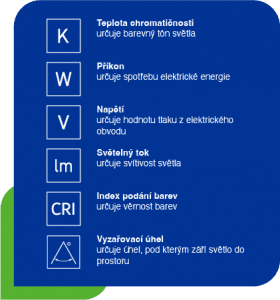TESLAbikář or how to choose the right LED bulb
3. part power consumption of LED bulbs
 The wattage tells us how much electricity the LED bulb will consume, i.e. how much it will cost us to light up. It gives us the instantaneous power consumption of an LED bulb in units of watts (W). We express the hour of operation of an LED bulb in watt-hours (Wh) or kilowatt-hours (kWh).
The wattage tells us how much electricity the LED bulb will consume, i.e. how much it will cost us to light up. It gives us the instantaneous power consumption of an LED bulb in units of watts (W). We express the hour of operation of an LED bulb in watt-hours (Wh) or kilowatt-hours (kWh).
Let's take the example of an LED bulb with an input power of 10 W, which, according to the relationship described above, consumes 0.01 kWh per hour of operation.s
THE BULB IS SUPPOSED TO GLOW, NOT HEAT
When buying tungsten bulbs, we were used to buying only by wattage, so all the data for LED technology is compared with conventional bulbs to get an idea of how much they will shine, even at such a low wattage.
Some people compare the new modern LED bulbs with the classic tungsten bulbs. And some don't understand this comparison because they are no longer allowed to be manufactured or sold. Thus, they could no longer be purchased and may have never even seen them lit. So whoever doesn't remember the classic incandescent bulb, don't let the gear charts complicate your choice. Clearly, LED bulbs are more energy efficient and save you money because they have much better luminosity at many times less wattage.
Using modern LED bulbs from TESLA lighting, you can achieve up to 85% savings in electricity costs compared to using a conventional bulb. The main disadvantage of conventional bulbs was their low efficiency, as only 5-8% of the energy was converted into light, while 92-95% of the energy was converted into heat. With LED bulbs the opposite is true, as up to 90% of the energy is converted into light, which we are used to.



One conventional bulb has the same consumption as
eight LED bulbs from TESLA lighting.
The next part will be devoted to the luminous flux or luminosity of LED bulbs, which are in the range of TESLA lighting.

